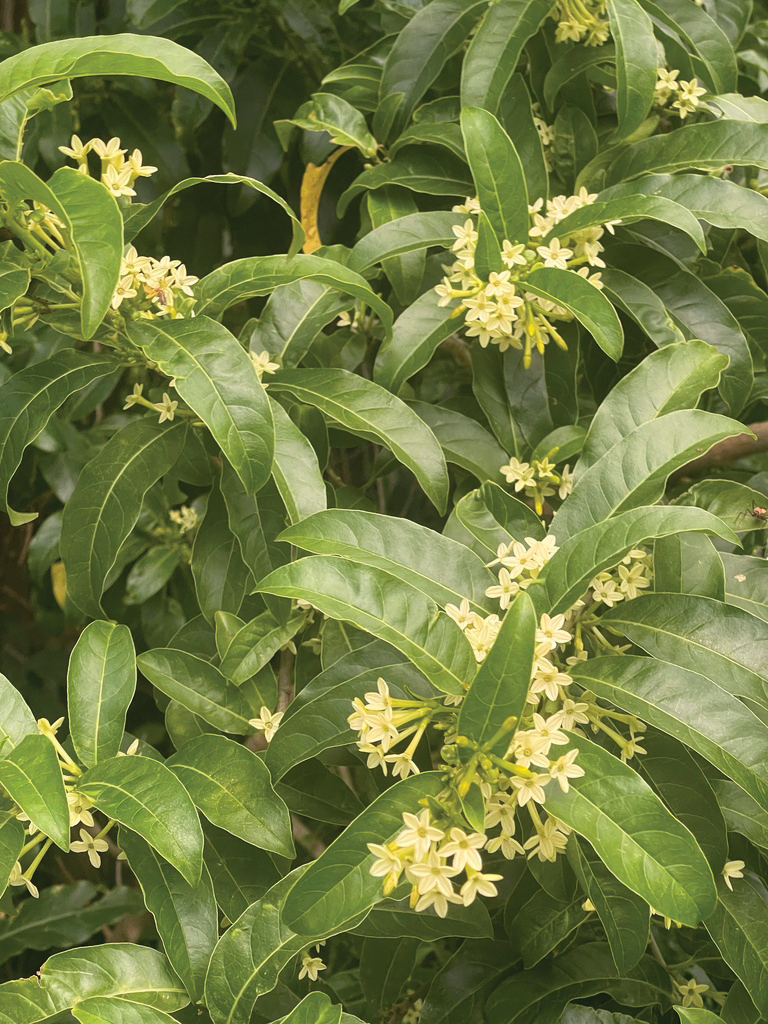September 2024
CESTRUM LAEVIGATUM, OR THE INKBERRY PLANT (ALSO KNOWN AS INKWEED OR NIGHTSHADE), IS AN EVERGREEN SHRUB OF APPROXIMATELY 1 M TO 2 M IN HEIGHT. ALONG COASTAL AREAS IT CAN FORM TREES UP TO 15 M TALL.
The shrub was brought to South Africa as an ornamental plant for gardens and to also serve as a windbreaker. It is known for its elliptical shiny green leaves, green to black olive-shaped berries, thin pale grey bark, yellow trumpet-like flowers and an unpleasant pungent smell if you bruise the leaves and/or stems.

An inkberry shrub.

The berries are extremely poisonous for livestock.

The flowers of the poisonous Cestrum laevigatum plant.
Poisoning from this invasive plant, originally from Brazil, usually occurs among cattle in June and July, when it is drier. During these months, the pasture is usually grazed bare, and cattle then eat this plant in a non-selective manner. At this stage, the concentration of toxins – gitogenin and digitogenin – is at its highest in the green berries of the plant.
Although the shrub was originally found mainly in certain parts of KwaZulu-Natal, it is now found in areas along the Vaal River in the Northern Free State and North West as well. It is easily spread by birds that eat the berry with the seed and excrete it in manure. Berries can be poisonous to cattle, sheep and goats.
SYMPTOMS IN CATTLE
Symptoms of poisoning are typically these of colic, namely restlessness, grinding of teeth and moaning. The animal will kick its belly and crouch. Eye discharge, constipation, poor balance, sunken and staring eyes are also symptoms of this poisoning.
The poison works quickly and often the animals are found dead before any symptoms can be recorded. There is also no treatment for a sick animal, but in cases of poisoning with a low dose, the animal can survive after three or four days with veterinary help.
PREVENTION
Publication: September 2024
Section: Pula/Imvula
Author: DAWID VAN HEERDEN, JUNIOR ANIMAL SCIENTIST, NWK